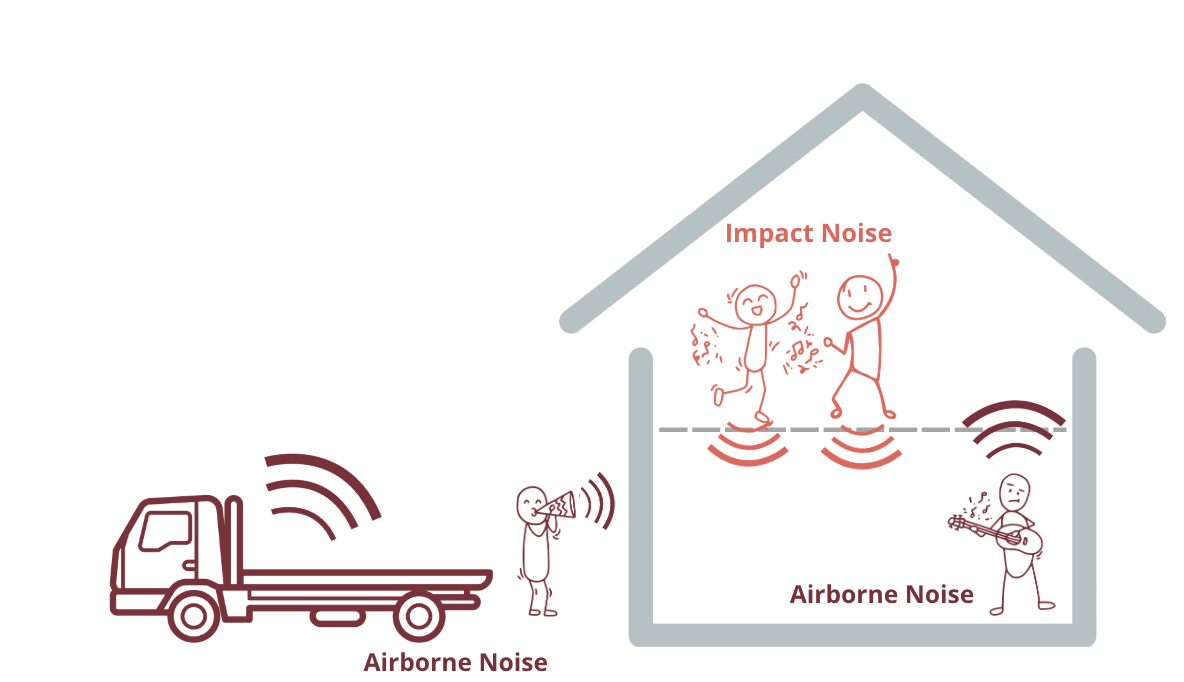You have probably heard of STC and IIC but what do these mean and measure in acoustics? In this blog we will cover the core acoustic measurements.
Whether you are dealing with neighbours who love loud music, noisy traffic such as trucks passing by or footsteps from the apartment above, there will be a soundproofing solution to help.
Before you can soundproof a room or even your full home, you will need some understanding of the type of noise issue you are dealing with.
In this guide, we will break down the differences between airborne and impact sounds and provide solutions to reduce them.

What is Airborne Noise?
Airborne noise travels through the air and eventually through walls, floors or ceilings. This may be voices, music, TV noise, and barking dogs.
What is Impact Noise?
Impact noise occurs when an object makes contact with a surface, causing vibrations that travel through the structure. Examples include footsteps, furniture being moved, or objects dropping on a hard surface.
How to reduce Airborne noise.
- Add mass to walls and ceilings. Thicker walls help prevent airborne sound from travelling through. PhoneStar Tri is a great option to add mass while only 15mm thick. PhoneStar is made of structured cardboard layers filled with sand that effectively reduces airborne noise transfer.
- Seal gaps and cracks. Sound can travel through even the smallest openings, so sealing gaps is crucial. We recommend using an acoustic sealant for small gaps, installing door seals and upgrading your windows to double or triple glazing.
How to Reduce Impact Noise
- Consider investing in a quality flooring underlay to help cushion and absorb vibrations. The best quality acoustic underlays include FloorMuffler and GenieMat.
- For timber mid-floors we recommend a later of PhoneStar which will add mass and dissipate the sound energy.
- Decouple appliances and furniture. Vibrations from appliances like washing machines, speakers, and even furniture can contribute to impact noise. Minimise this by placing anti-vibration pads under appliances.
Soundproofing a room doesn’t have to be overwhelming. By understanding the different types of noise and applying the right materials and techniques, you can create a quieter and more peaceful space. Whether you’re soundproofing a home office, bedroom, or rental unit, investing in the right solutions will make a significant difference in noise control.
Need expert advice on the best soundproofing materials? Get in contact with our team if you have a soundproofing issue you need help with.


